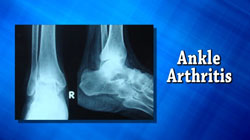Blog
Plimsoll Shoes Recommended over Modern Shoes for Children
<p><img src="/images/rheumatoid-arthritis2.jpg" border="0" hspace="12" width="290" height="163" align="left" />According to scientists, <a href="http://www.independent.co.uk/news/science/oldfashioned-plimsolls-with-flat-soles-are-better-for-kids-feet-8809800.html">old-fashioned plimsoll</a> flat soled shoes are better for children’s feet than modern trainers. Research shows that the human foot is designed for long-distance running, but only if the runner lands in the front part of the foot.</p>
<p>By wearing plimsoll shoes children are more likely to run in a more natural manner on the front part of the foot, while cushioned trainers with thick heels makes it more difficult for young people to use that part of their foot. “If someone is going to learn to learn to run from first principles let them learn using their natural equipment as much as possible,” said Mick Northumbria of the University in Newcastle.</p>
<p>Making sure your <a href="/patient-education-.html">child’s feet</a> are healthy is crucial to their overall health and development. Seeking the help of a podiatrist like <a href="/staff.html">Dr. Howard Hyman</a> of <a href="http://www.thepodiatrycenter.com/">The Podiatry Center, P.C</a>. could be a benefit to your child. Dr. Hyman will examine your child’s feet and provide the right care and treatment for them.</p>
<p><strong>What to Do to Keep Your Child’s Feet Healthy </strong><br /> <br /> Throughout childhood, it is very crucial for children to have and maintain good health and proper care of their feet. With good foot health starting at an early age, foot problems and diseases can be prevented in the future. As children continue to develop so do their feet so they require different technique of care and maintenance.<br /> <br /> Even though babies do not begin walking until a later age, their feet should also be taken care of properly:</p>
<ul>
<li>Stay away from socks that are too tight for your baby’s feet. This can cause pain and allow less circulation</li>
<li>Encourage your baby to move their feet as much as possible so they feel comfortable with them</li>
</ul>
<p>When your baby begins to learn how to walk, do not panic if they are unsteady on their feet. Toddlers are just getting used to the way in which their feet work so wobbliness is completely acceptable.<br /> <br /> When your child grows out of their toddler years, here are a few steps they should take to stay with good health within their feet:</p>
<ul>
<li>Practice proper hygiene with them to prevent fungus and infections</li>
<li>Be observant of any injuries that might occur</li>
<li>If an injury does occur, get it checked out by a doctor immediately</li>
<li>Make sure your child is always wearing shielding and comfy shoes even at play</li>
</ul>
<p>If you have any questions, please feel free to contact our office in <a href="/office.html">Milburn NJ</a>. We offer the newest diagnostic and treatment technologies for all your foot ankle injuries.<br /> <br /> For more information on keeping your children’s feet healthy, follow this <a href="/component/content/article/172-what-to-do-to-keep-your-childs-feet-healthy-.html">link</a>.</p>
Computer Based Modeling a Method to Identify Rheumatoid Arthritis
Researchers in the UK have been able to find a way to prematurely identify rheumatoid arthritis through computer-based modeling. Rheumatoid arthritis is a condition marked by a painful joint inflammation, and is inherited from genetics and nurtured by environmental factors such as smoking.
Through correlating information about the patient’s smoking history and genetic markers taken from blood tests, doctors at the University of Manchester and King’s College London have been able to identify the likelihood of developing the condition. According to Dr. Ian Scott of King’s College, “This is an important first step in trying to develop ways to prevent the onset of rheumatoid arthritis.”
If you are suffering from foot pain and think it might be caused by arthritis, you should seek the care of a podiatrist like as Dr. Howard Hyman of The Podiatry Center, P.C. Dr. Hyman can examine your foot pain and diagnose any potential conditions.
What Is Rheumatoid Arthritis?
Rheumatoid Arthritis is an autoimmune disorder in which the body’s own immune system attacks the membranes surrounding the joints. As a result, inflammation of the lining and the destruction of the joint’s cartilage and bone occur.
Symptoms
- Swelling & pain of the feet
- Stiffness in the feet
- Pain on the ball or sole of feet
- Joint shift or deformation can occur
Diagnosis
Quick diagnosis of RA in the feet is usually necessary for the podiatrist to treat the area effectively. Your doctor will ask you about your medical history, occupation, and lifestyle to determine what could have triggered the condition. The Rheumatoid Factor Test helps determine if someone is affected by the disease.
Treatment
Treating RA is usually a lifelong process that includes a variety of methods and therapy. Your doctor will prescribe special shoes that help with arch and heel support, and a physical therapist will assist with joint flexibility.
If you have any questions, please feel free to contact our office in Milburn NJ. We offer the newest diagnostic and treatment technologies for all your foot ankle injuries.
Read the full article on Rheumatoid Arthritis.
Flat Feet Can Act As a Gateway to Developing Other Foot Disorders
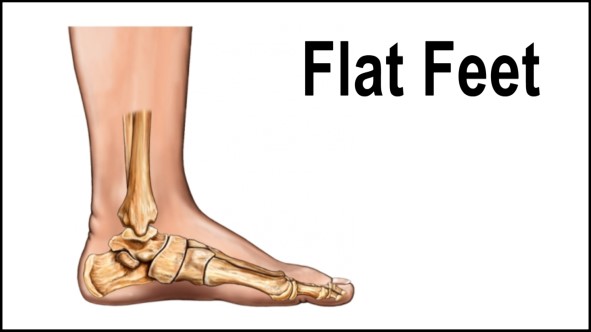 In the journal PLoS One, researchers have found common wisdom when it comes to flat feet to be scientifically true. The Framingham Foot Study measured foot posture in 3,000 people, finding that people with flat feet were more at risk for overlying toes and conditions such as hammertoe and bunions.
In the journal PLoS One, researchers have found common wisdom when it comes to flat feet to be scientifically true. The Framingham Foot Study measured foot posture in 3,000 people, finding that people with flat feet were more at risk for overlying toes and conditions such as hammertoe and bunions.
On the contrary, people who possessed high arched feet were less likely to develop these feet conditions; since high arched feet tend to supinate as opposed to pronate. However, the study did not indicate any relationship between foot type and developing plantar fasciitis.
Having flat-feet can lead to complications down the road. If you think you have flat feet you should seek out the care of a podiatrist such as like Dr. Howard Hyman of The Podiatry Center, P.C. Dr. Hyman will diagnose any foot conditions you may have as well as provide you with a range of treatment options.
What are Flat Feet?
Conditions & Problems:
Having flat feet makes it difficult to run or walk because of the stress placed on the ankles.
Alignment – The general alignment of your legs can be disrupted, because the ankles move inward which can cause major discomfort.
Knees – if you have complications with your knees, flat feet can be a contributor to arthritis in that area.
Symptoms:
- Pain around the heel or arch area.
- Trouble standing on the tip toe.
- Swelling around the inside of the ankle.
- Flat look to one or both feet.
- Having your shoes feel uneven when worn.
If you have any questions, please feel free to contact our office in Milburn NJ. We offer the newest diagnostic and treatment technologies for all your foot ankle injuries.
Read more on Flat Feet.
Diabetes is correlated with Heel Fissures and Dry Skin According to Study
 A study by the National Foot Health Assessment and Institute of Preventive Foot Health shows that frequent dryness on the feet is experienced by twenty percent of Americans over 21. Additionally, split skin more prevalent in women than men by at least fifty percent.
A study by the National Foot Health Assessment and Institute of Preventive Foot Health shows that frequent dryness on the feet is experienced by twenty percent of Americans over 21. Additionally, split skin more prevalent in women than men by at least fifty percent.
These symptoms of cracked heels include; red or flaky patches, peeling and cracked skin, itchy skin, and bleeding from the cracks. Cracked heels are also called “heel fissures,” and are prevalent among people with diabetes. According to The Star, cracked heels may be difficult to treat if the skin around the outer part is already thickened or callused.
Having cracked heels can be bothersome and embarrassing but it doesn’t have to be. Seek the help of a podiatrist like Dr. Howard Hyman of The Podiatry Center, P.C. Dr. Hyman will examine your feet and provide you with the best treatments possible.
The Truth about Cracked Heels
Cracked Heels
Cracked heels are unappealing, and make it harder for you walk around in sandals. Not only may they look bad, but they can also tear stockings, socks, and wear out your shoes. There are several methods to help restore a cracked heel and prevent further damage.
How do you get them?
Dry skin is the number one culprit in creating cracked heels. Many athletes, walkers, joggers, and even swimmers suffer from cracked heels. Age and skin oil production play a role to getting cracked heels as well.
Promote Healing
Over the counter medicines can help, especially for those that need instant relief, or who suffer from chronic dry feet.
Pumice Stones – these remove dead skin, and then you can massage cream onto your foot. This way the cream will be absorbed. The skin needs to be exfoliated; therefore the outer layer dead skin needs removal.
To learn more about the truth about cracked heels, please follow link below.
If you have any questions, please feel free to contact our office in Milburn NJ. We offer the newest diagnostic and treatment technologies for all your foot ankle injuries.
Read more on Cracked Heels.
Singer Tumbles While Singing Due to Wearing Hazardous High Heels
 Country singer Carrie Underwood took a spill lately during a concert while wearing 5 inch heels. The superstar was on stage in Corpus Christi, Texas when she got her shoe wedged in her large shirt and fell to the floor.
Country singer Carrie Underwood took a spill lately during a concert while wearing 5 inch heels. The superstar was on stage in Corpus Christi, Texas when she got her shoe wedged in her large shirt and fell to the floor.
The injury does not look like it will require serious matters and it does not appear that an operation will be needed. After her show, Underwood joked about the fall tweeting, “Hey, remember that time in Corpus Christi when that girl busted her butt on stage?! Hilarious! Oh wait, that was me! #5inchheels #klutz.”
Wearing high heels can cause discomfort or difficulty in standing or walking, if you have concerns over the usage of high heels you should seek the aid of a podiatrist like Dr. Howard Hyman of The Podiatry Center, P.C. Dr. Hyman can provide you with more information on alternative footwear as well as further details on foot and ankle pain you may be experiencing from heels.
Wearing High Heels and How it Affects Feet
Most doctors agree that high heels are bad for the health of your feet, and discourage wearing them when it can be avoided. High heels are known to cause joint pain and Morton’s neuroma, among other complications.
High heels affect what parts of the body?
- Joints in the Ankle
- Balls of the Feet
- Achilles Tendon
- Knees – heels cause the knees to bend constantly, creating stress on them
- Back – they decrease the spine’s ability to absorb shock, which may lead to back pain. Also, the vertebrae of the lower back may compress.
What problems can arise from long term use of high heels?
- Calluses
- Corns
- Morton’s Neuroma
- Plantar Fasciitis
- Bunions
- Hammertoe
For more information on maintaining proper foot health while wearing high heels, visit our link at the bottom.
If you have any questions, please feel free to contact our office in Milburn NJ. We offer the newest diagnostic and treatment technologies for all your foot ankle injuries.
Read more on High Heels and Feet.
Plantar Fasciitis Can Be Cured By Following a Series of Exercises
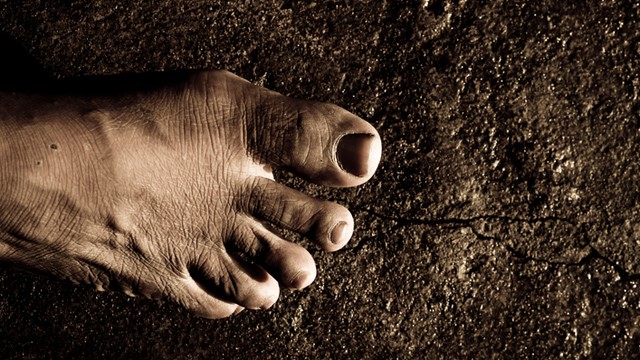 According to the U.S. National Library of Medicine, Plantar fasciitis is a painful inflammatory process of the plantar fascia tissue on the sole of the foot which affects around 2 million Americans each year. Plantar fascia manifests in people who practice high impact sports-runners, gymnasts, parachutists, and athletes who train on artificial surfaces, according to David Pierson, former president of the International Federation of Sports Chiropractors.
According to the U.S. National Library of Medicine, Plantar fasciitis is a painful inflammatory process of the plantar fascia tissue on the sole of the foot which affects around 2 million Americans each year. Plantar fascia manifests in people who practice high impact sports-runners, gymnasts, parachutists, and athletes who train on artificial surfaces, according to David Pierson, former president of the International Federation of Sports Chiropractors.
Dr. Miles Colaprate, DC at Balance Chiropractic and Acupuncture in Shelburne, Vermont, says, “Many people try to treat PF with minor stretching and denial. They roll their foot on a golf ball, or ice and heat their foot, neither of which are the correct therapy. Turns out, Pierson and Colaprete both agree that Plantar fascia can be treated at home; even more importantly if it's caught early.
Plantar Fasciitis can be painful and frustrating. If you are currently experiencing pain in the ball of your foot or heels, where the plantar fascia is located, it is best to seek the care of a podiatrist like Dr. Howard Hyman of The Podiatry Center, P.C. Dr. Hyman can examine your feet and work with you to provide an appropriate treatment option to ensure healing and recovery.
What is Plantar Fasciitis?
Plantar fasciitis is an inflammation of the connective tissues on the bottom of the foot, causing pain in the heel and arch of the foot.
What Causes Plantar Fasciitis?
- Lack of adequate footwear
- Obesity
- Excessive running
- Poor foot support
- Overpronation
How Can Plantar Fasciitis Be Treated?
- Conservative measures – anti-inflammatories, ice packs, stretching exercises, physical therapy, orthotic devices.
- Shockwave therapy – sends sound waves to the areas where pain is experience. Requires multiple sessions. This is used for very persistent cases of plantar fasciitis.
- Ultrasound-guided technique with steroid injections into the plantar fascia. This is from a relatively new and small study, but was shown to be effective in most cases treated.
If you have any questions, please feel free to contact our office in Milburn NJ. We offer the newest diagnostic and treatment technologies for all your foot ankle injuries.
Read more on Plantar Fasciitis.
Teacher Inspires Others by Participating in Half Marathon in Walking Brace
 Teacher Barbie Barnett took part in this year’s Rock ‘n’ Roll Chicago Half Marathon in spite of adversarial circumstances. In 2009, Barnett’s right foot and lower section of her right leg became paralyzed while she was recovering from back surgery.
Teacher Barbie Barnett took part in this year’s Rock ‘n’ Roll Chicago Half Marathon in spite of adversarial circumstances. In 2009, Barnett’s right foot and lower section of her right leg became paralyzed while she was recovering from back surgery.
Barnett suffered from foot drop, a condition that weakens the muscles that move the front part of the foot. With the assistance of an ankle-foot orthotic brace, Barnett eventually learned how to walk again. “My brace helped me gain…mobility and independence” Barnett said about her rehabilitation therapy and participation in the event, hoping to serve as an inspiration to others enduring the same condition.
If you have a need for ankle-foot orthotics, it is highly recommended to seek the care of a podiatrist, like Dr. Howard Hyman of The Podiatry Center, P.C. Dr. Hyman can work with you on treatment options for your foot conditions that might require the use of ankle-foot orthotics.
Ankle Foot Orthotics and What They Do
Usually used for the foot or ankle, orthotics provide support for weakened limbs or help direct the limbs so they may function properly. These orthotics can help strengthen muscles as well as benefitting muscles that need to be loosened or lengthened. Usually the orthoses is designed in a rigid L shape that is contoured to the calf and flesh colored in order to blend with the patient’s appearance.
When are Orthotics Necessary?
Orthotics are prescribed when someone is diagnosed with diseases that affect the musculature such as polio and multiple sclerosis. However, ailments such as arthritis and stroke, or foot conditions that “toe in”, may also require orthotics.
As opposed to metal braces of previous years, modern orthotics have improved tremendously. Many of today’s orthotics are manufactured with lightweight plastics and other advanced materials to provide new levels of support and comfort.
If you have any questions, please feel free to contact our office in Milburn NJ. We offer the newest diagnostic and treatment technologies for all your foot ankle injuries.
Read more on Ankle Foot Orthotics.
Blood Vessel Proteins To Blame For Cold Feet According to Research
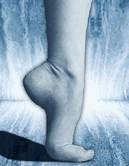 A research study in the American Journal of Physiology-Cell Physiology suggests a new understanding of why cold feet happen. Scientists pinpointed specific proteins in the blood vessels that cause a reaction when the body is exposed to very low temperatures. The body's normal response to cold is to restrict blood flow to the extremities, but in people with cold feet, the proteins overreact and limit circulation too much, causing overly cold feet and hands.
A research study in the American Journal of Physiology-Cell Physiology suggests a new understanding of why cold feet happen. Scientists pinpointed specific proteins in the blood vessels that cause a reaction when the body is exposed to very low temperatures. The body's normal response to cold is to restrict blood flow to the extremities, but in people with cold feet, the proteins overreact and limit circulation too much, causing overly cold feet and hands.
Cold feet due to poor circulation are a difficult condition to treat. If you are experiencing overly cold feet that you think might be due to poor circulation, you should seek the care of a podiatrist like Dr. Howard Hyman of The Podiatry Center, P.C. Dr. Hyman will give you a thorough examination to determine the cause of your cold feet and recommend appropriate treatment options.
What is Poor Circulation?
Poor blood circulation in the feet and legs is caused by peripheral artery disease (PAD), which is the result of a buildup of plaque in the arteries.
Plaque buildup or atherosclerosis results from excess calcium and cholesterol in the bloodstream. It usually restricts the amount of blood which flows through the arteries. Poor blood circulation in the feet and legs is sometimes caused by inflammation in the blood vessels, known as vasculitis.
Causes
Lack of oxygen and oxygen from poor blood circulation restricts muscle growth and development.
It can also cause:
- Muscle pain
- Numbness in legs
- Cramps
- Skin discoloration
- Weakness
- Slower nail & hair growth
- Stiffness
- Erectile dysfunction
Those who have diabetes and or smoke are at greatest risk for poor circulation, or who are over 50.
For more information please follow the link below.
If you have any questions, please feel free to contact our office in Milburn NJ. We offer the newest diagnostic and treatment technologies for all your foot ankle injuries.
Read the Full Article on Poor Circulation in the Feet.
Footballer Incurs Potential Career Ending Injury
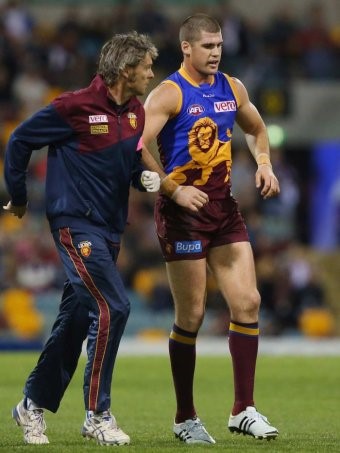 Jonathan Brown of the Brisbane Lions suffered a foot injury that just might mark the end of his athletic career. The 31 year old forward seems to have torn his plantar fascia and will be visiting a surgeon next week to get a better observation of his injury.
Jonathan Brown of the Brisbane Lions suffered a foot injury that just might mark the end of his athletic career. The 31 year old forward seems to have torn his plantar fascia and will be visiting a surgeon next week to get a better observation of his injury.
Although Lions coach Michael Voss hopes Brown will play in 2014, Brown himself is unsure. “I just don’t want to go out there and play for the sake of it, or play for the money. I want to go out there and still be able to contribute.” Brown said “If I played my last game, so be it. I can live with that,” Brown told the AFL Footy Show.
Facing such an injury can be daunting, but with proper care returning to sports and activities is not impossible. Receiving treatment from a podiatrist such as Dr. Howard Hyman of The Podiatry Center, P.C. can help you manage your injury as well as provide solutions for how to get back into the sports you enjoy.
Getting Back into Sports after Foot and Ankle Injuries
Sprained ankles are a frustrating and painful ordeal many athletes go through. Recovery from a sprained ankle usually involves the RICE method. This includes:
- Rest
- Ice
- Compression
- Elevation
In addition, athletes should consider wearing an ankle brace in order to keep the ankle stabilized and alleviate any pain as it heals.
Stress fractures that occur in the foot and ankle come in two types. This includes stable and displaced. Stable stress fractures do not consist of any shifting in bone alignment while displaced stress fractures involve bone ends that do not line up.
Learn more about getting back into sports after foot and ankle injury by following link below.
If you have any questions, please feel free to contact our office in Milburn NJ. We offer the newest diagnostic and treatment technologies for all your foot ankle injuries.
Read more on Getting Back into Sports after Foot and Ankle Injuries.
Fighter Suffers Broken Foot during Fight at UFC 163
a
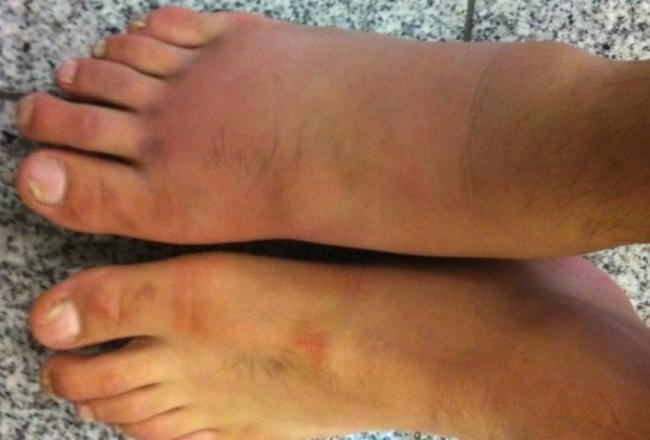 Professional MMA fighter Chan Sung Jung fractured his orbital bone during the battle against featherweight champion Jose Aldo at UFC 163. Jung, known as The Korean Zombie, was taken down when Aldo kicked the injured area during the fight, following up by Jung with several strikes on the ground for the TKO.
Professional MMA fighter Chan Sung Jung fractured his orbital bone during the battle against featherweight champion Jose Aldo at UFC 163. Jung, known as The Korean Zombie, was taken down when Aldo kicked the injured area during the fight, following up by Jung with several strikes on the ground for the TKO.
While the official prognosis for Jung’s foot is unknown, his opponent Aldo will actually be out of the cage for the rest of 2013, also suffering a broken foot. Jung, who had a three win streak prior to losing to Aldo, will be meeting with specialists to discuss treatment options for his fracture.
Dealing with a broken foot can be a painful ordeal. However, an injury like this can be managed and taken care of by a podiatrist like Dr. Howard Hyman of The Podiatry Center, P.C. Dr. Hyman can examine your broken foot, determine the severity of your injury, and work with you to provide the appropriate treatment options.
Broken Foot Causes, Symptoms, and Treatment
A broken foot is caused by one of the bones in the foot ‘breaking’, or fracturing. Bones typically break when the bone is either bended, crushed, or stretched beyond its natural capabilities. Usually the location of the fracture indicates how the break occurred, whether it was through an object, fall, or any other type of injury.
Common Symptoms of Broken Feet:
- Bruising
- Pain
- Redness
- Swelling
- Blue (foot)
- Numbness
- Cold
- Misshapen
- Cuts
- Deformities
Those who are experiencing any of these symptoms, or suspect that they have a broken foot, should seek medical attention in a center where x-rays can be performed. This is especially urgent if any of the symptoms include numbness, blue coloring, cold feet, cuts, misshapen toes or deformities as these indicate more severe cases.
Treatment for broken bones varies depending on the cause, severity and location. Some will require the use of splints, casts or crutches while others could even involve surgery to repair the broken bones. Personal care includes the use of ice and keeping the foot stabilized and elevated. Trying to keep the foot rested is important as the bones need plenty of time to heal and recover.
If you have any questions, please feel free to contact our office in Milburn NJ. We offer the newest diagnostic and treatment technologies for all your foot ankle injuries.
Read more on Broken Foot Causes, Symptoms, and Treatment.
More...
Summer is not the Season for Sweaty Feet
a
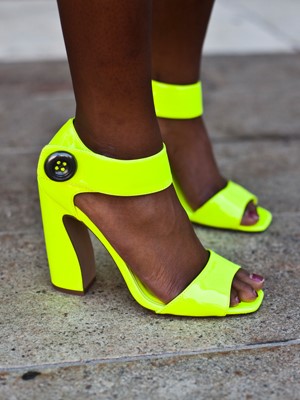 For many people, summertime is the season to wear open-toed shoes or even go barefoot. However, not all people look forward to this weather, or are even able to enjoy the perks of the season. A condition known as hyperhidrosis, which is excessive sweating, and summer might be to blame for it.
For many people, summertime is the season to wear open-toed shoes or even go barefoot. However, not all people look forward to this weather, or are even able to enjoy the perks of the season. A condition known as hyperhidrosis, which is excessive sweating, and summer might be to blame for it.
Hyperhidrosis often occurs in the armpits, hands, and feet, areas of the body that are more likely to perspire. This condition can especially affect women, who are more likely to wear open shoes. "Hyperhidrosis on feet is a big problem for many women," said Francesca Fusco, a dermatologist from New York City. Botox is usually recommended in people who suffer from hyperhidrosis in their feet to prevent excessive sweating and sliding. Those with a minimal case of hyperhidrosis can minimize moisture by putting antiperspirant on the feet.
Having sweaty or excessive moisture in the feet can be bothersome and appear unhygienic. Keeping your feet in check by a podiatrist such as Dr. Howard Hyman of The Podiatry Center, P.C. an important solution for your foot and ankle needs.
Hyperhidrosis of the Feet
Hyperhidrosis is a rare disorder that can cause people to have excessive sweating of their feet. This can usually occur all on its own without rigorous activity involved. People who suffer from hyperhidrosis may also experience sweaty palms.
Although it is said that sweating is a healthy process meant to cool down the body temperature and to maintain a proper internal temperature, hyperhidrosis may prove to be a huge hindrance on a person’s everyday life.
Plantar hyperhidrosis is considered to be the main form of hyperhidrosis. Secondary hyperhidrosis can refer to sweating that occurs in areas other than the feet or hands and armpits. Often this may be a sign of it being related to another medical condition such as menopause, hyperthyroidism and even Parkinson’s disease.
In order to alleviate this condition, it is important to see your doctor so that they may prescribe the necessary medications so that you can begin to live a normal life again. If this is left untreated, it is said that it will persist throughout an individual’s life.
If you have any questions, please feel free to contact our office in Milburn NJ. We offer the newest diagnostic and treatment technologies for all your foot ankle injuries.
Read more on Hyperhidrosis of the Feet.
Diabetic Patients Undergoing Amputations Less Frequently According to Report
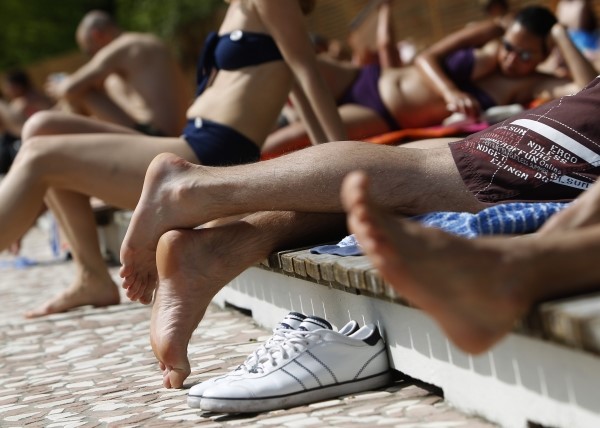 According to a report in July’s issue of the journal Foot & Ankle International, fewer Americans are undergoing diabetes-associated limb amputations. In 2008 alone, about 70,000 people underwent amputations according to the CDC. Limb amputations caused by diabetes account for 60 percent of all amputations in the U.S.
According to a report in July’s issue of the journal Foot & Ankle International, fewer Americans are undergoing diabetes-associated limb amputations. In 2008 alone, about 70,000 people underwent amputations according to the CDC. Limb amputations caused by diabetes account for 60 percent of all amputations in the U.S.
Sadly by 2050 it is expected one in three U.S. adults will have diabetes according to the CDC. "The trend was so clear and more obvious than I thought it would be," said senior author Dr. Phinit Phisitkul, an assistant clinical professor at the University of Iowa department of orthopedics and rehabilitation, according to HealthDay.
If you are currently suffering from diabetes and need help with diabetic foot care, it is recommended to seek the care of a podiatrist like Dr. Howard Hyman of The Podiatry Center, P.C. Dr. Hyman can help you manage your diabetic feet to ensure that they remain healthy, while also providing you with any treatment options if any problems do arise.
Diabetic Foot Care
Diabetes affects millions of people of all ages each year. Diabetes damages blood vessels in many parts of the body, including the feet. When damage occurs to nerves in the feet, they may be unable to send the proper signals to the peripheral nervous system, resulting in a condition known as neuropathy. Once a diabetic patient develops neuropathy, it is imperative that the feet are well taken care of to avoid possible amputation of the feet.
The Importance of Caring for Your Feet
- Regularly check your feet for bruises or sores.
- Wear socks that fit your feet; socks shouldn’t be tight.
- Wear properly fitting shoes that are comfortable.
For more information on caring for your diabetic feet, visit our link below.
If you have any questions, please feel free to contact our office in Milburn NJ. We offer the newest diagnostic and treatment technologies for all your foot ankle injuries.
Read the full article on Diabetic Foot Care.
Local Houston Rapper Shows Fans His Removed Bunions via Instagram
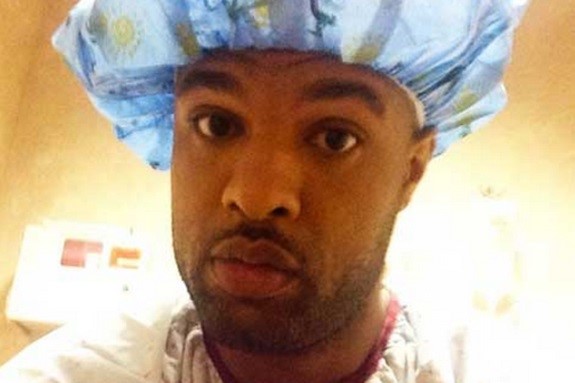 Houston’s famous rapper Slim Thug went through with the decision to post pictures of his foot surgery on social media sites like Instagram. The 32-year-old rap sensation put up a shocking picture of his feet post-surgery showing the removal of his bunions. In an additional post on the site, the rapper took a picture of himself in hospital scrubs. According to Billboard.com, Thug has made a swift recovery judging by the results shown by his colorful messages via twitter feed.
Houston’s famous rapper Slim Thug went through with the decision to post pictures of his foot surgery on social media sites like Instagram. The 32-year-old rap sensation put up a shocking picture of his feet post-surgery showing the removal of his bunions. In an additional post on the site, the rapper took a picture of himself in hospital scrubs. According to Billboard.com, Thug has made a swift recovery judging by the results shown by his colorful messages via twitter feed.
Bunions themselves are a common problem people face. If you are experiencing toe pain or foot pain that you think might be related to bunions, it is recommended to seek the care of a podiatrist such as Dr. Howard Hyman of The Podiatry Center, P.C. Dr. Hyman can examine your bunions, diagnose the condition, and provide the appropriate treatment options to you.
What is a Bunion?
A bunion is formed of swollen tissue or boney growth enlargement, usually located at the base joint of the toe that connects to the foot. The swelling occurs by the bones in the big toe shifting inward, which impacts the other toes of the foot. This causes the area around the base of the big to become inflamed and often painful.
Why do Bunions Form?
- Genetics – susceptibility to bunions are often hereditary, particularly among Caucasians
- Stress on the feet – poorly fitted and uncomfortable footwear that place undue stress on feet, such as heels and stilettos, can cause bunions to form
How are Bunions Diagnosed?
Podiatrists knowledgeable in anatomy and foot structure can be able to diagnose bunions through the following two methods:
- Blood Tests – to help rule out other conditions while finding underlying causes to bunions, especially from disease
- Radiological Exam- X-rays can show whether there are any joint enlargements near the toe’s base, which can indicate a bunion
If you have any questions, please feel free to contact our office in Milburn NJ. We offer the newest diagnostic and treatment technologies for all your foot ankle injuries.
To learn more about treatment procedures on bunions, please follow link below.
Read more on Bunions.
Actress Shirley MacLaine Finds a Solution to Footpain in Shock Absorber Footwear
 Shirley MacLaine added some spring to her step, as she was seen in her attention grabbing footwear venturing out for a coffee at Starbucks in Malibu. The all white pair of shoes is known to include pain relief soles which mimic springs.
Shirley MacLaine added some spring to her step, as she was seen in her attention grabbing footwear venturing out for a coffee at Starbucks in Malibu. The all white pair of shoes is known to include pain relief soles which mimic springs.
Shirley’s shoes are designed for people who suffer from mobility issues, including back and foot pain. According to the DailyMail, the actress’s shoes include a shock absorber containing a steel coil that reduces pain, caused by movement. On the previous day the Hollywood legend opted for conventional slip on shoes, instead of her pain relief footwear.
Foot pain can lead to common foot ailments, especially if it’s not treated right away. If you believe you need a switch in footwear like MacLaine, it is highly recommended to seek the care of a podiatrist, like Dr. Howard Hyman of The Podiatry Center, P.C Dr. Hyman can work with you on treatment options for your foot or ankle conditions.
The Elderly and their Feet
As we age we start to notice many changes in our body, but the elder population may not notice them right away. Medical conditions may prevent the elderly to take notice of their foot health right away. Poor vision is a lead contributor to not taking action for the elderly. There are many complications that can lead to serious issues, if the problem is not taken care of right away.
Common Conditions
Neuropathy – can reduce feeling in the feet, and can hide many life threatening medical conditions.
Reduced flexibility – prevents the ability of proper toenail trimming, and foot cleaning. If left untreated, it may lead to further medical issues.
Foot sores – amongst the older population can be serious before they are discovered. Some of the problematic conditions they may face are:
Gouging toenails affecting nearby toe
Shoes that don’t fit properly
Pressure sores
Loss of circulation in legs & feet
Edema & swelling of feet and ankles
Injuries left unnoticed
Insect or pet bites can also become inflamed and infected
Stepping on sharp objects, without notice can increase pain
To learn more about the elderly and the feet, please follow link below.
If you have any questions, please feel free to contact our office in Milburn NJ. We offer the newest diagnostic and treatment technologies for all your foot ankle injuries.
Read more on Elderly and Feet.
